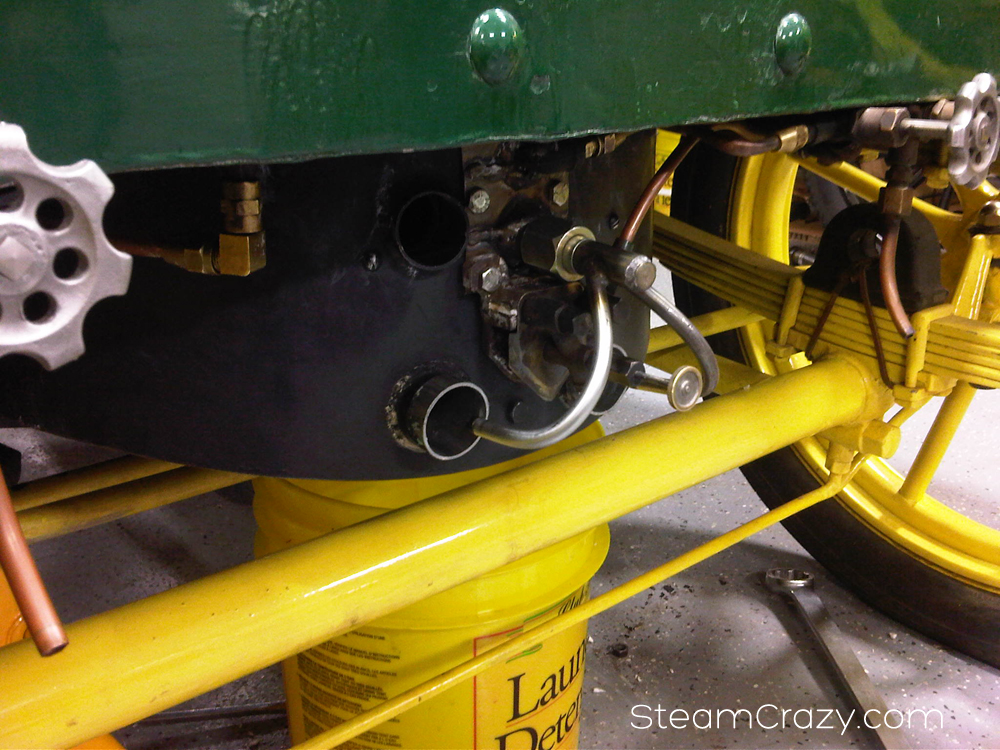Sometimes success is bitter sweet. Today we went to start the Stanley from cold for a second time. When cycling the main burner on I noticed a lot of vapor coming out from the base of the boiler. I had noticed the vapor on the initial startup but assumed it was water vapor coming off the insulation in the burner pan. On the second startup I was not quite as convinced. My suspicions of this being vapor was confirmed when the boiler reached 150 PSI and we got a nice sized tube fire.
Upon inspection of the burner, looking for leaks, I couldn’t find any sources that would produce the volume of vapor I was getting. I had made a great attempt to seal the burner with fiber frax but it seemed that I must have overlooked something. I decided a call to Pat Farrell was in order to see if he could provide some insight as to what might be happening.
Pat quickly sorted the issue out to being a lack of a burner rope seal. Unfortunately I was unaware that there needed to be an actual seal when you were running an outer burner pan that overlaps the outside diameter of the boiler. The outcome of all this is that the burner needs to come back out so that the seal can be installed.









